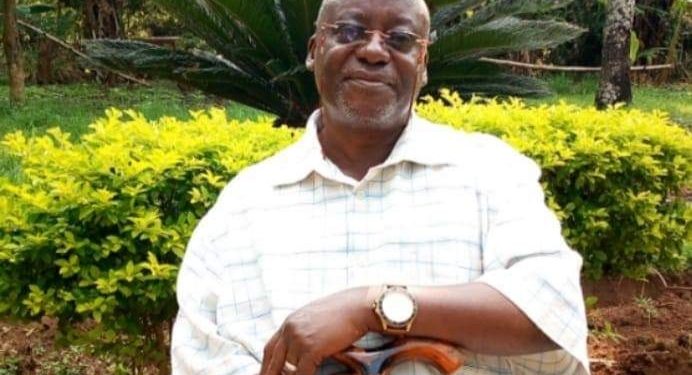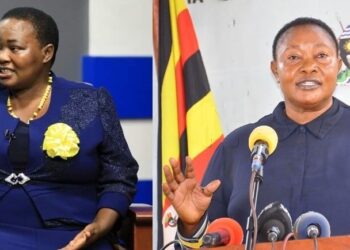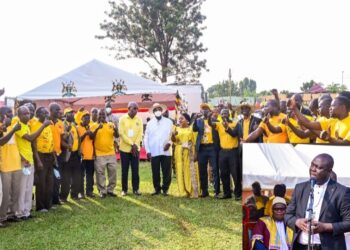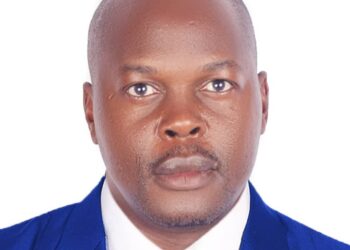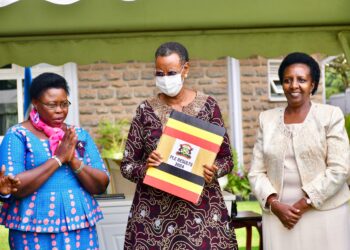When the British colonialists stepped on the Busog soil towards the end of the 19th Century en route to establishing their Uganda Protectorate, they found the only Kingdom in the Eastern part of Africa with its headquarters at Nnenda Hill in Busambira in Kigulu, of what later came to be known as Busoga around 1232/33. The Kingdom had been established by a Bunyoro-Kitara Prince called Byaruhanga Ndahura, who also gave Busoga the name Busoga because a plant, which was called Kisogasoga in Bunyoro and Mukakale in Lusoga, was very abundant and widely distributed in the area. The Kingdom was by the Igaga Clan of Bunyoro to which Byaruhanga belonged and was the ruling Clan in Bunyoro.
The Busoga Kingdom and the Igaga hegemony at Nnenda were, therefore, over 600 years old by the time the colonialists plotted to occupy and destroy it to establish their own hegemony on the Kingdom and beyond. The colonialists, wanted to establish new imperialist designs over an expansive land consisting of many nationalities, namely: Acholi, Ankole, Buganda, Bugisu, Bukedi, Bunyoro, Busoga, Karamoja, Kigezi, Lango, Moyo, Sebei, Teso, Toro, West Nile.
The Busoga Kingdom was always full of conflicts, in form of struggle for power. Different Kings always invited the Kabaka of Buganda to send troops to fight on their side against others, but was tranquil by the time the British colonialists arrived. To their surprise they found the Kingdom well- organised. Byaruhanga Ndahura had established chiefdoms, which he later designated Hereditary Chiefdoms. These were Bugabula, Bugweri, Bukooli, Busiki, Luuka and Buzaaya. Kigulu would also have been named a Chiefdom, but there could be no two bblls in the same Kraal: a Hereditary Chief of Kigulu and a King at Nnenda in Busambira.
So while the Busoga Kingdom of the Baise Igaga existed, Kigulu was not a Hereditary Chiefdom but the seat of power of the Kingdom. The first King was Byaruhanga Ndahura’s son, who occupied the throne at Nnenda in 1232 when he was two years old, and the chiefs detailed above were appointed by Prince Byaruhanga Ndahura of Bunyoro- Kitara to act as the regents to the infant King until he was old enough to rule.
Byaruhanga had given power to govern the Chiefdoms to his soldiers who belonged to the Ngobi Clan, and therefore, had no royalty attached to them, and to his brother-in-law, whose Clan was not known to the early Basoga. So the soldiers who became instant chiefs were Gabula of Bugabula, Tabingwa of Luuka, Menhya of Bugweri, Wakooli of Bukooli and Muzaaya of Buzaaya.. The brother-in-law who was assigned to rule over Busiki Chiefdom was Kisiki.
It is important to mention that when the Colonialists arrived at Nnenda they found the King had a kind of Prime Minister who chaired the King’s Parliament, which consisted of the Chiefs. That Prime Minister was called Kyabazinga who administered the Kingdom and reported directly to the King.
.
The first agreement the British Colonialists made with any authority when they arrived in the the general area they later called the Uganda Protectorate, it was with the King of Busoga with head quarters at Nnenda.Hill.
So when the British colonialists plotted to weaken the King and ultimately destroy his Kingdom, they first rendered the Office of Kyabazinga redundant by creating the Office of President Of Busoga Parliament, that did exactly what the Kyabazinga was doing: chairing the Parliament of Busoga and being the Chief administrator ofcBusoga. The one they chose for the Office of President was militarist Semei Kakungulu from Kiki Kingdomin present day Buganda to operate from Bukaleba in present-day Mayuge.
This is the history, which a succession of writers have attempted to destroy by recycling a false history to justify some interests should continually access the Kyabazingaship that was established at Bugembe in 1935 by the colonialists in collusion with the Chiefs, who intially thought and believed that the post of Kyabazinga was below their dignity, and gave the post to the Chief of Bulamogi, which had been curved from Busiki, just like Bukono, by Kisiki Nantamu of Busiki, and given to Zibondo and Nkono respectively. Zibondo and Nkono were brothers who had migrated,along with another brother of theirs, Nagwere, to and sought refugee status in Busiki from Gogonya in Bugwere, Bukedi. Nagwere went back, but Zibondo and Nkono persisted and settled in different parts of Busiki. Their houses expanded profusely over the years.
This history is important but has been obliterated by writers of Busoga history because of conflict of interest regarding Kyabazingaship.
With those manouvres by the British colonialists, it was a matter of time before the Igaga hegemony at Nnenda and over Busoga was erased from the face of Busoga. That eventuality came in 1935 when President Semei Kakungulu rendered his resignation to his colonial masters on account of age. By the time he made that decision, he had brought the whole of Busoga under the political influence of the British colonialists and effectively applied their divide and rule policy in the area. The divide and rule policy had established Bulamogi and Bukono as hereditary Chiefdoms,and also added Butembe, Bunhyole and Bunhya as hereditary Chiefdoms. Kigulu had also been restored as Chiefdom and recognised as one of the Hereditary Chiefdoms of Busoga. So that is how the frequently cited dictum that Busoga a 11 hereditary Chiefdoms arose. It had a colonial origin, with Semei Kakungulu as the implementer. Actually the last King at Nnenda was poisoned to death in 1935, and the one who would have succeeded him, Kintu Kisambira fled to and hid himself in Bugambo village of Luuka where he died and was buried.
So, when Kakungulu rendered in his resignation, the colonialists summoned the Chiefs to Bugembe, and asked them to choose a successor as President to preside over the Busoga Lukiiko. As I said the Chiefs of the ancient chiefdoms told the colonialists that the post of President was below their dignity. That is how they suggested Ezekiel Wako, the Chief of Bulamogi, to take the post. And so the Bulamogi Chief became the first man from Busoga to become President, replacing Kakungulu. But he did not remain President because the Chiefs agreed with the colonialists a little later in 1936 to change the title of President to Kyabazinga to exactly do what the President was doing: Chairing the Busoga Lukiiko. So they simply took the title from the Nnenda hegemonic rule of the Igaga Clan.
It was when Kadhumbula Gabula Nadiope II of Bugabula dropped his ego and sought to be Kyabazinga that the tradition conflict over Kyabazingaship between Bulamogi and Bugabula started. Nadiope did not think being Chairman of Busoga Lukiiko was dignifying enough. Before he left to fight in Burma during the Second World War on the side of Britain, he raised the Status of Kyabazinga by creating the Office of Katikiiro (something he borrowed from Buganda) to be the Chief Administrator of Kyabazingaship and of a Chairman (or Speaker) to Chair the Lukiiko Sessions. Ever since he became Kyabazinga he plotted to make Kyabazingaship hereditary as if a Kyabazinga was superior to the ancient Chiefdoms. Even by the time Apollo Milton Obote abolished Kingdoms in Uganda, Nadiope was still manouverings to make Busoga a Kingdom, something which the Colonialists detested because they did not want a Kingdom in the East. Even Bulamogi resisted because if Nadiope succeeded, it would exclude the Zibondo House from accessing the post of Kyabazinga.The British simply allowed an article in the 1962 Constitution of Uganda to read as “The Territory of Busoga with semi – federal status. All along, Busoga under British rule had been officially The District of Busoga.
We need a rethinking of the history of Busoga in view of the recurrent conflicts over Kyabazingaship between Bulamogi and Bugabula. We need to demystify the so much false history of Busoga centred around Kyabazingaship and creating the falsehood that Bulamogi and the other Chiefdoms created under British rule have an equal claim in the Kyabazingaship of Busoga.
One thing is true. The Kyabazinga existed at Nnenda alongside the King as the administrative arm of the Kingdom. They were both abolished by the colonialists but Kyabazingaship was restored at Bugembe to help the colonialists to effectively take over and establish their imperial hegemony in and over the area.
The British colonialists never re-established the Kingdom of Busoga until they left. That they left a semi-federal Territory of Busoga by constitutional design was due to Gabula Nadiope’s negotiation skills supported by especially Apollo Milton Obote at the Lancaster Constitutional Conference in the UK. They were both members of Uganda Peoples Congress UPC). Obote was President and Nadiope was his Deputy.
If this article will help Basoga begin to rethink Busoga to make it a better place to stay in with fewer conflicts, well and good. In an earlier article I stated that much of the conflict over Busoga Kyabazingaship today is due to political and constitutional confusions introduced in the designation of Kyabazingaship as a cultural institution, which is not right. Right from the beginning, Kyabazinga resuscited at Bugembecwas a political Institution to help power at the centre to rule Busoga. Cultural and spiritual leadership was was by the Clans and spiritual leaders resoectively. There was no interference between the political, cultural and spiritual.
For God and My Country
Do you have a story in your community or an opinion to share with us: Email us at editorial@watchdoguganda.com


